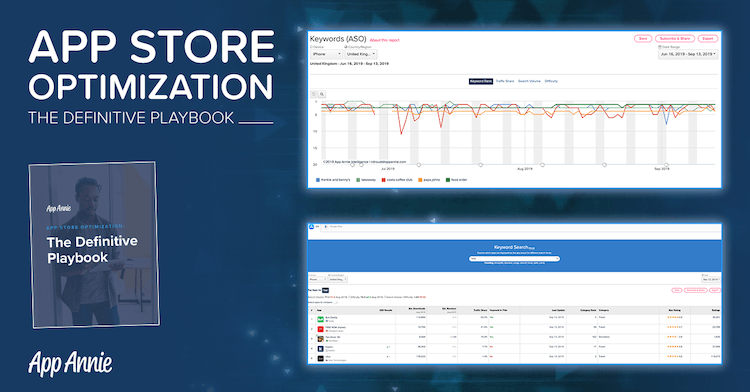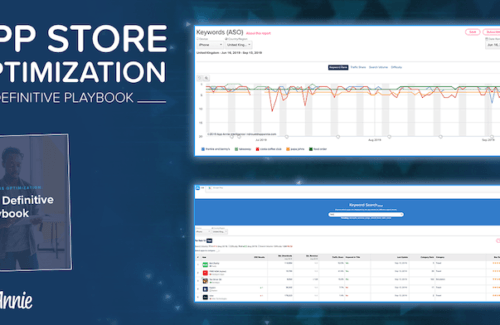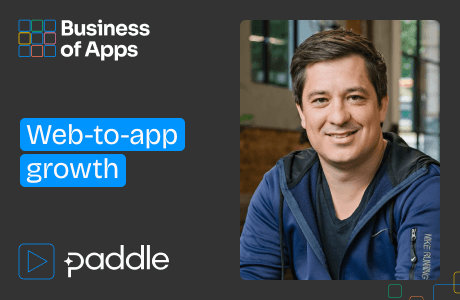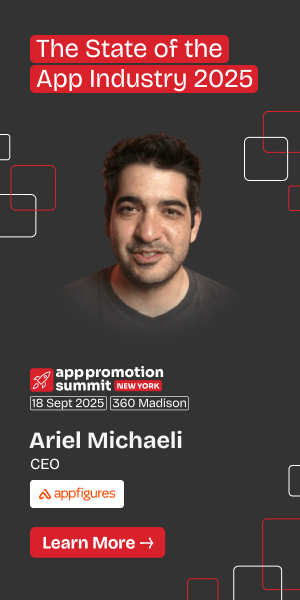The app market is one of the most competitive and crowded spaces in the world — with approximately 2 million iOS App Store apps and 4 million Google Play Store apps. Between the sheer number of apps and the skyrocketing costs of advertising, successfully acquiring and retaining users is more challenging than ever.
As a mobile marketer, it’s important to be able to develop a mobile strategy that will allow you to cut through the clutter and increase app downloads, boost store rankings and ultimately drive revenue for your business. Having a robust App Store Optimization (ASO) will help you achieve these goals. In fact, according to Apple, 65% of app downloads come through organic searches on the iOS App Store. For many app publishers however, the first thing that comes to mind when they think about ASO is building out a keyword strategy. While certainly an important component, optimizing your app for organic discoverability goes well beyond keywords.
Ultimate App Growth Guide 2025
Boost your app’s success with the Ultimate App Growth Guide! 🚀 Expert insights, proven strategies & must-know tips. Download now!
Master app growthMaking A First Impression
We’ve all heard the saying – “You only have one chance to make a first impression.” – the same applies to your app. How you introduce your app makes all the difference when it comes to engaging users.
- App Icons: despite its size, your app icon wields immense influence over engagement. The best icons are simple, designed for scalability, recognizable and different from the competition. Mobile dating app Tinder is an excellent example of a recognizable and catchy icon.
- Screenshots: While your app icon may pique attention, the screenshots drive home the core features and benefits. Your screenshots should have an engaging narrative, but make sure to show your two best screenshots first. A great example of this is Airbnb who is able to succinctly communicate the core features of the app to prospective users in six images, while the first two can also stand alone to entice prospective users to install with key verbs that relate to key travel actions.
- Video: Just like a movie trailer, a strong video can capture the attention of your audience. Mare sure they are short, sweet and punchy and include sound and text where possible. The preview video for Harry Potter: Wizards Unite, the augmented reality (AR) mobile game by Niantic, does this effectively by succinctly communicating its value proposition to prospective gamers.
- Testing: It’s important to continuously test new designs to optimize for the highest performing creative assets. Keep the potential of each asset in mind — and the app store you’re focusing on — and prioritize accordingly.
Improving Discoverability
There are many ways a user may stumble across your app; one of the most common is App Store search. With millions of apps available between the app stores, choosing keywords that will move the needle for your business is no easy feat.
- It’s about fit: Before selecting an app category, consider your app’s most natural fit and how your target users are most likely to find you. Look at what competitors are doing and remember, you only get to choose one primary category.
- Monitor for changes and organic downloads: Track key changes to competitor keyword rankings and monitor lifts in downloads and rankings. Following any updates, monitor for changes to your app’s — and your competitors’ — organic download volume and velocity.
- Pay attention to what your users are saying: Track your rankings and reviews to see how users respond to new updates and features. Not only do these impact your performance in the app stores, they’re often filled with valuable insights. In addition, take the time to show that you’re listening through your blog or release notes. On both iOS and Google Play, you can respond directly to user feedback.
- Prompting User Feedback: Improve the likelihood of receiving a positive review by asking for feedback— for instance, when a user has just completed a challenge or key action, or has leveled up. Also consider asking beta users and professional peers to provide honest reviews.
- Drive awareness with mobile web: Utilize mobile web’s ability to cast a wide net, especially for location-based searches, and consider funneling that interest to your app store page.
- Convert mobile web users to app users: Measure signals of mobile web users to gauge their level of intent and convert those users to app users, where the experience is often richer, better optimized and more efficient for the user.
Going Global
Part of developing a successful strategy is expansion. Just because your ASO strategy works in one market doesn’t mean it will elsewhere. This is where localization comes in; taking into consideration both language and cultural differences.
- Translate key text to improve discoverability: Keep in mind that even if users read English, they may still search in their native language. Translating the title, description, keywords and supporting text will allow users to find your app easily.
- Capitalize on markets that index multiple languages: The iOS App Store may index multiple languages, depending on the country. Use that valuable real estate wisely.
- Make assets locally relevant: Adapt your screenshots, videos and icons to make them as relevant and impactful as possible in the regions you’re targeting.
Measuring Success
So you’ve updated your creative assets, improved your ratings and reviews and successfully boosted your app’s downloads and rankings. All done, right? Not exactly. ASO is an ongoing process, something that requires nurturing and attention and, you guessed it, optimization. This means continually:
- Monitoring your keyword rankings (and your competitors’)
- Spotlighting new features and UI enhancements
- Updating and testing creative assets to highlight app updates
- Analyzing reviews and rankings and leveraging feedback
- Adjusting the marketing levers that drive downloads and spark reviews
- Localizing your app’s metadata to increase discoverability and conversion across regions
- Optimizing your mobile web presence to drive traffic to your app store page and convert to app users
- Tracking your paid versus organic downloads mix to uncover the efficacy of your ASO efforts
Implementing a holistic and iterative ASO program will not only improve organic discoverability, it will increase your chances of persuading users to download your app, and ultimately grow your top line.
For more information, you can find App Annie’s comprehensive ASO handbook here.












